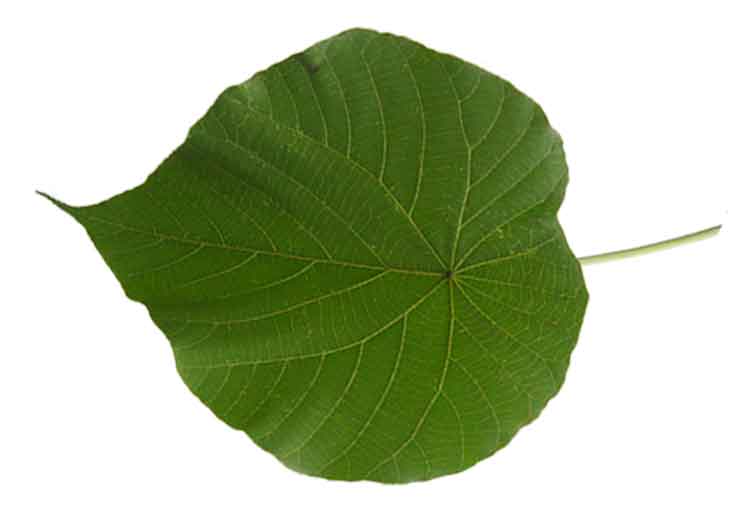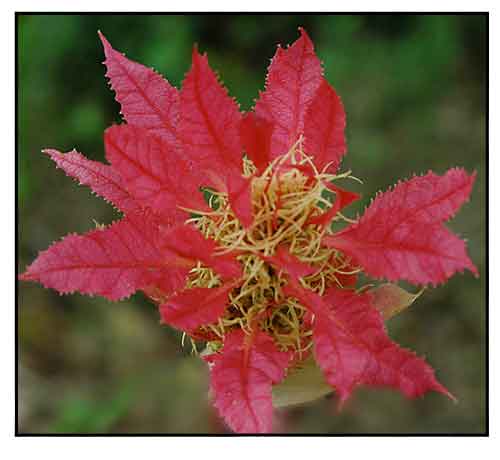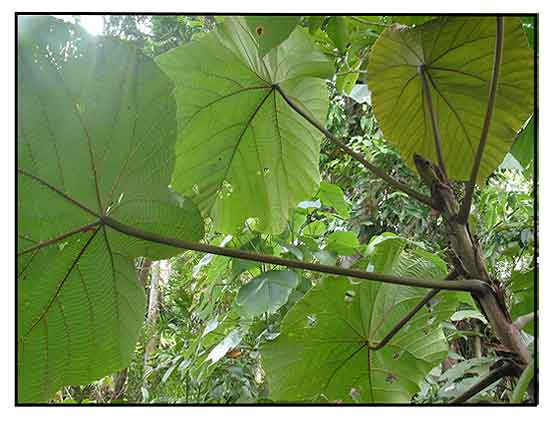
Family • Euphorbiaceae
Binuñgang-malapad
Macaranga grandifolia (Blanco) Merr.
BINGABING / CORAL TREE
| Scientific names | Common names |
| Croton grandifolius Blanco | Abing-abing (Tag.) |
| Macaranga grandifolia (Blanco) Merr. | Bilua (Pamp.) |
| Macaranga porteana André | Biluak (Tag.) |
| Bilaun (Tag.) | |
| Bingabing (Tag.) | |
| Binuang (Tag.) | |
| Binuñgang-malapad (Tag.) | |
| Bongabong (Bis.) | |
| Bilura (Tag.) | |
| Ginabang (Ilk.) | |
| Ginabang-a-dakkel (Ilk.) | |
| Hinoso (Tag.) | |
| Kinabang (Ig.) | |
| Takip asin (Tag.) | |
| Coral tree (Engl.) | |
| Nasturtium tree (Engl.) | |
| Parasol leaf tree (Engl.) | |
| Macaranga grandifolia (Blanco) Merr. is an accepted species. KEW: Plants of the World Online | |
Updated March 2024 / Octiober 2016
![]()
 |
PHOTOS / ILLUSTRATIONS |
| Photo © Godofredo Stuart / StuartXchange / from Binunga |
| OTHER IMAGE SOURCE: Euphorbiaceae : Macaranga grandifolia / Copyright © 2012 by P B Pelser & J F Barcelona (contact: pieter.pelser@canterbury.ac.nz) [ref. DOL26639] / Non-Commercial Use / Click on image or link to go to source page / Phytoimages.siu.edu |
| OTHER IMAGE SOURCE: Euphorbiaceae : Macaranga grandifolia / Inflorescence / Copyright © 2011 by Leonardo L Co [ref. DOL32684] / Non-Commercial Use / Image modified / Click on image or link to go to source page / Phytoimages.siu.edu |
Additional
Sources and Suggested Readings |
• |
DOI: It is not uncommon for links on studies/sources to change. Copying and pasting the information on the search window or using the DOI (if available) will often redirect to the new link page. (Citing and Using a (DOI) Digital Object Identifier) |
| List of Understudied Philippine Medicinal Plants |
| New plant names needed The compilation now numbers over 1,300 medicinal plants. While I believe there are hundreds more that can be added to the collection, they are becoming more difficult to find. If you have a plant to suggest for inclusion, native or introduced, please email the info: scientific name (most helpful), local plant name (if known), any known folkloric medicinal use, and, if possible, a photo. Your help will be greatly appreciated. |
• |
 |

 Gen info
Gen info

